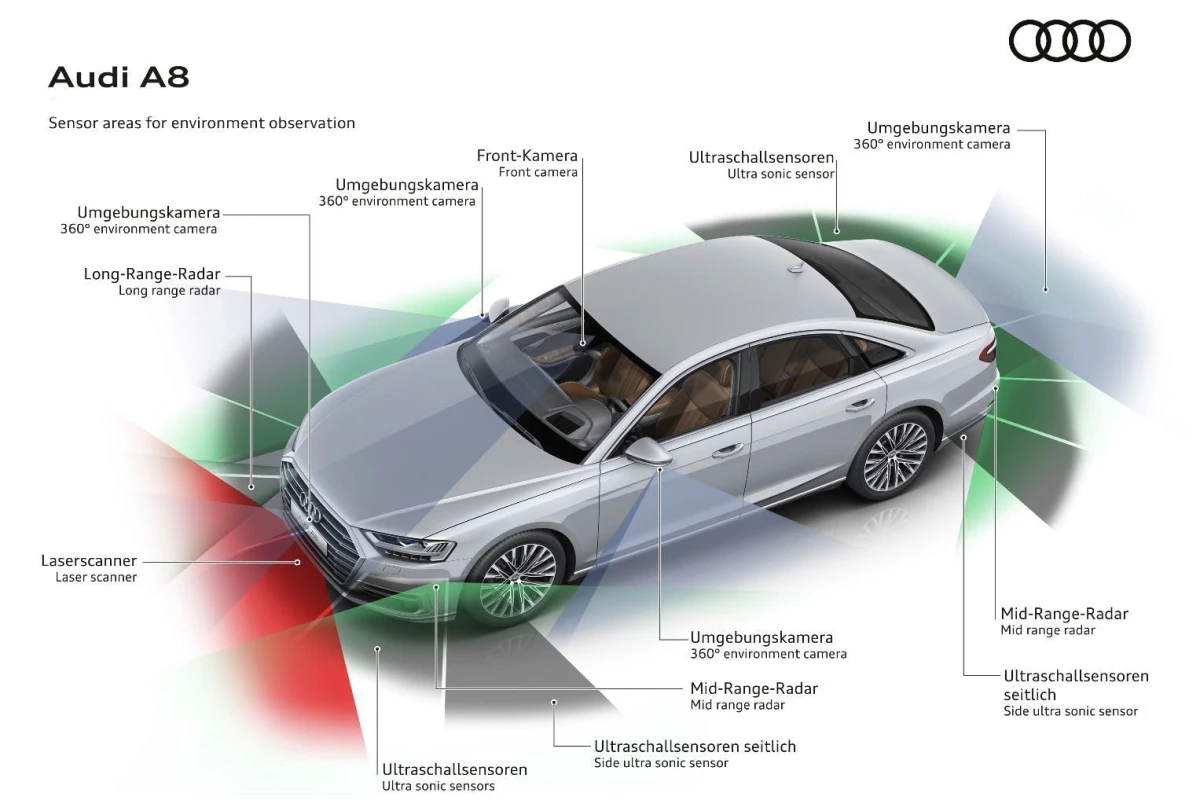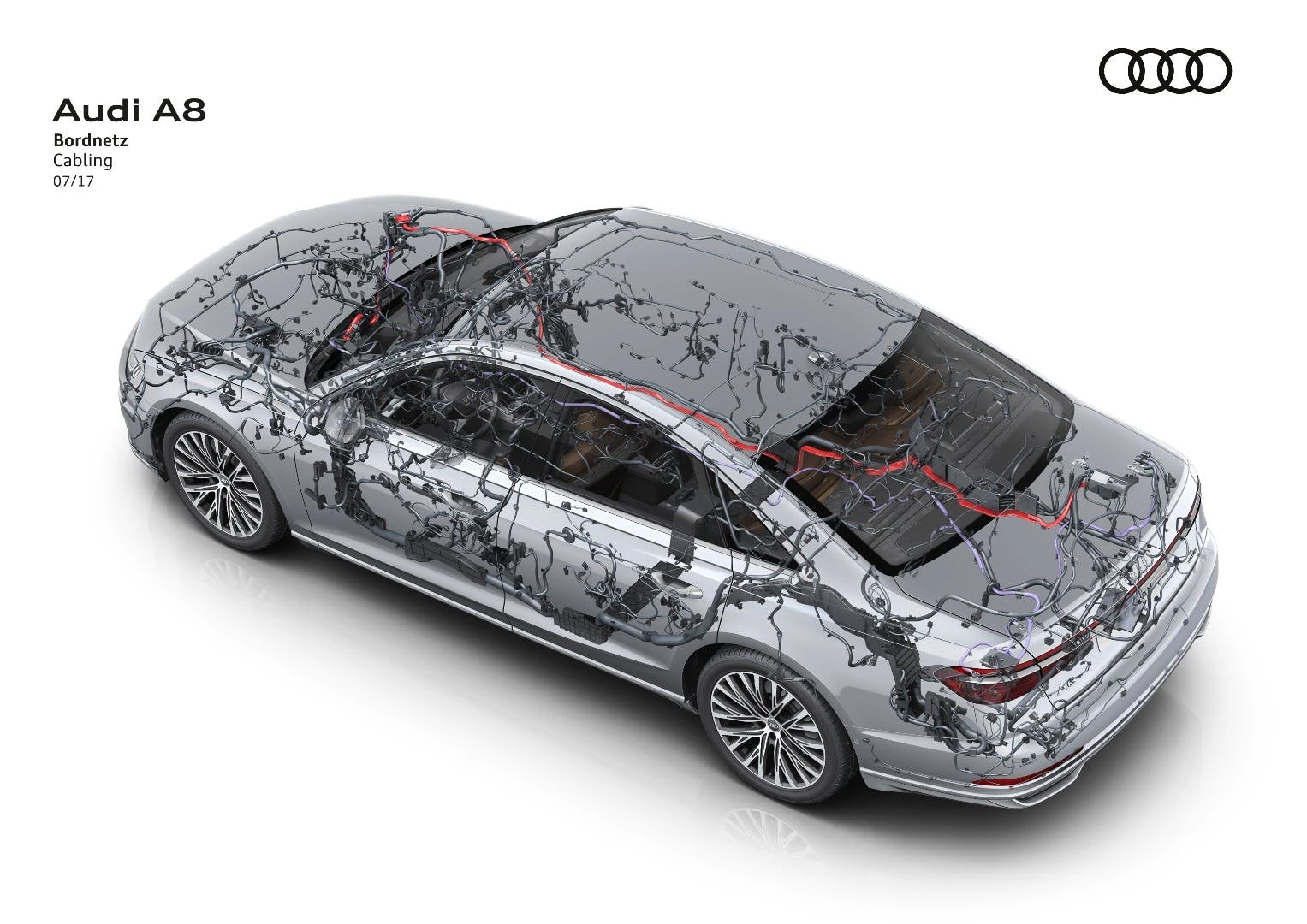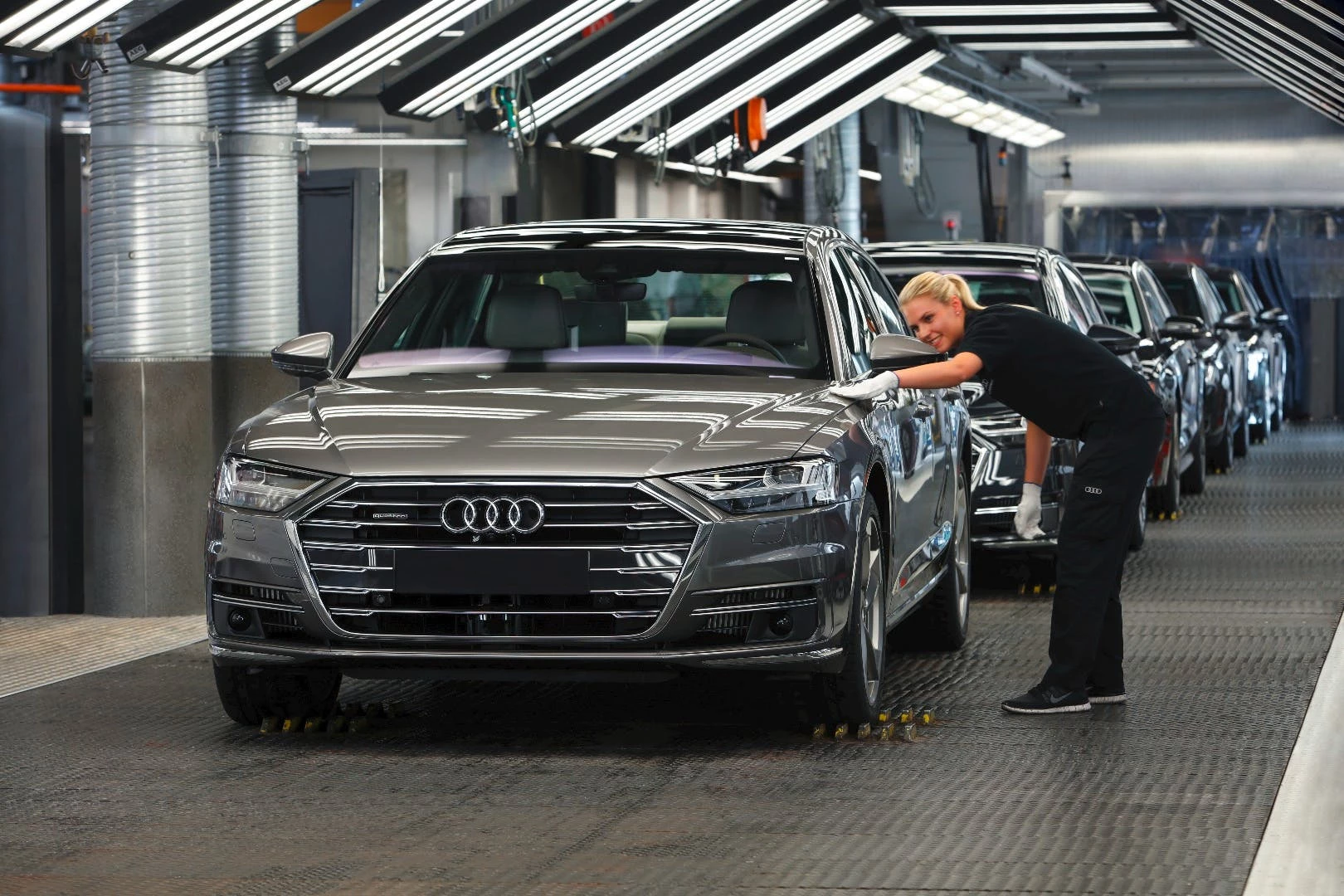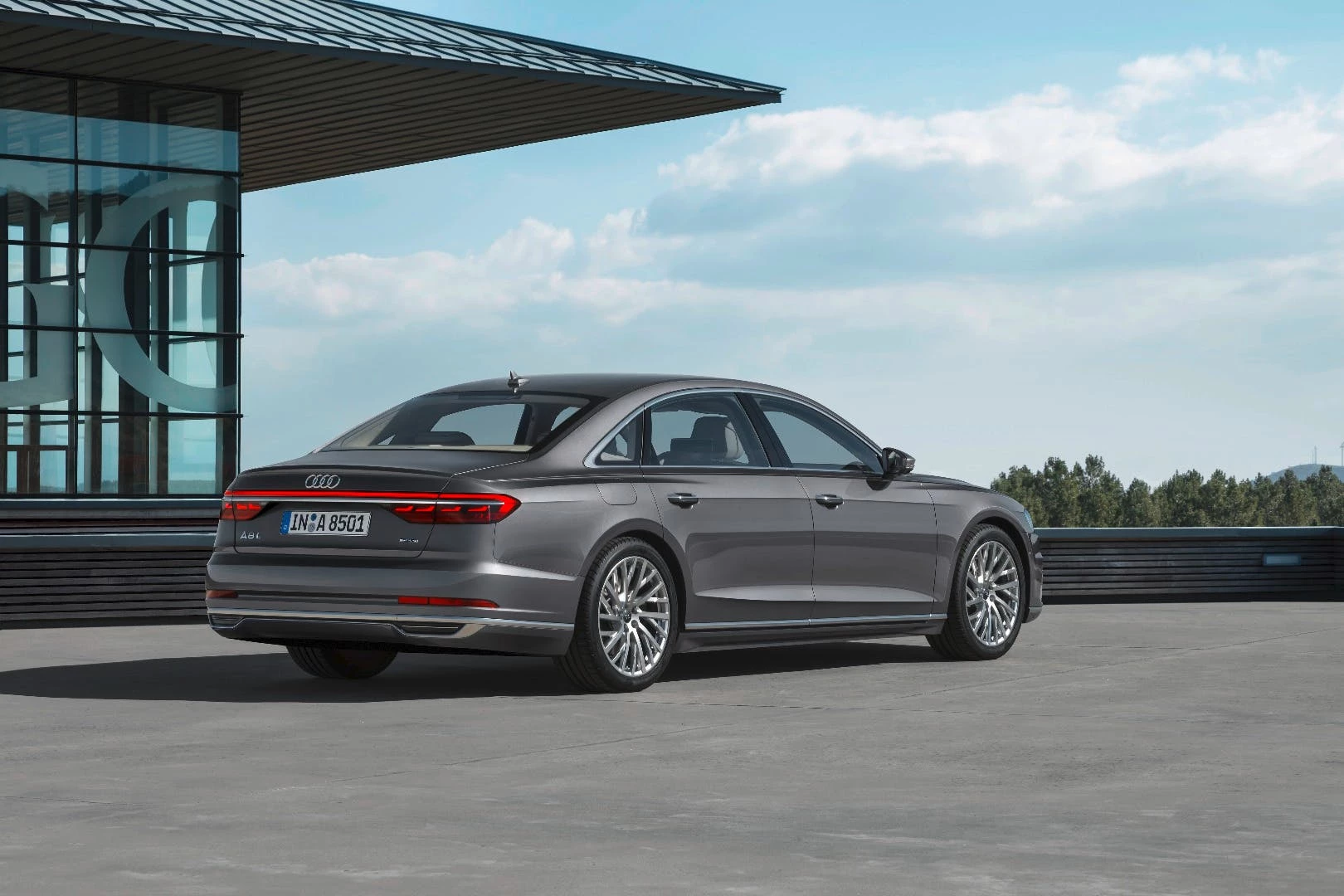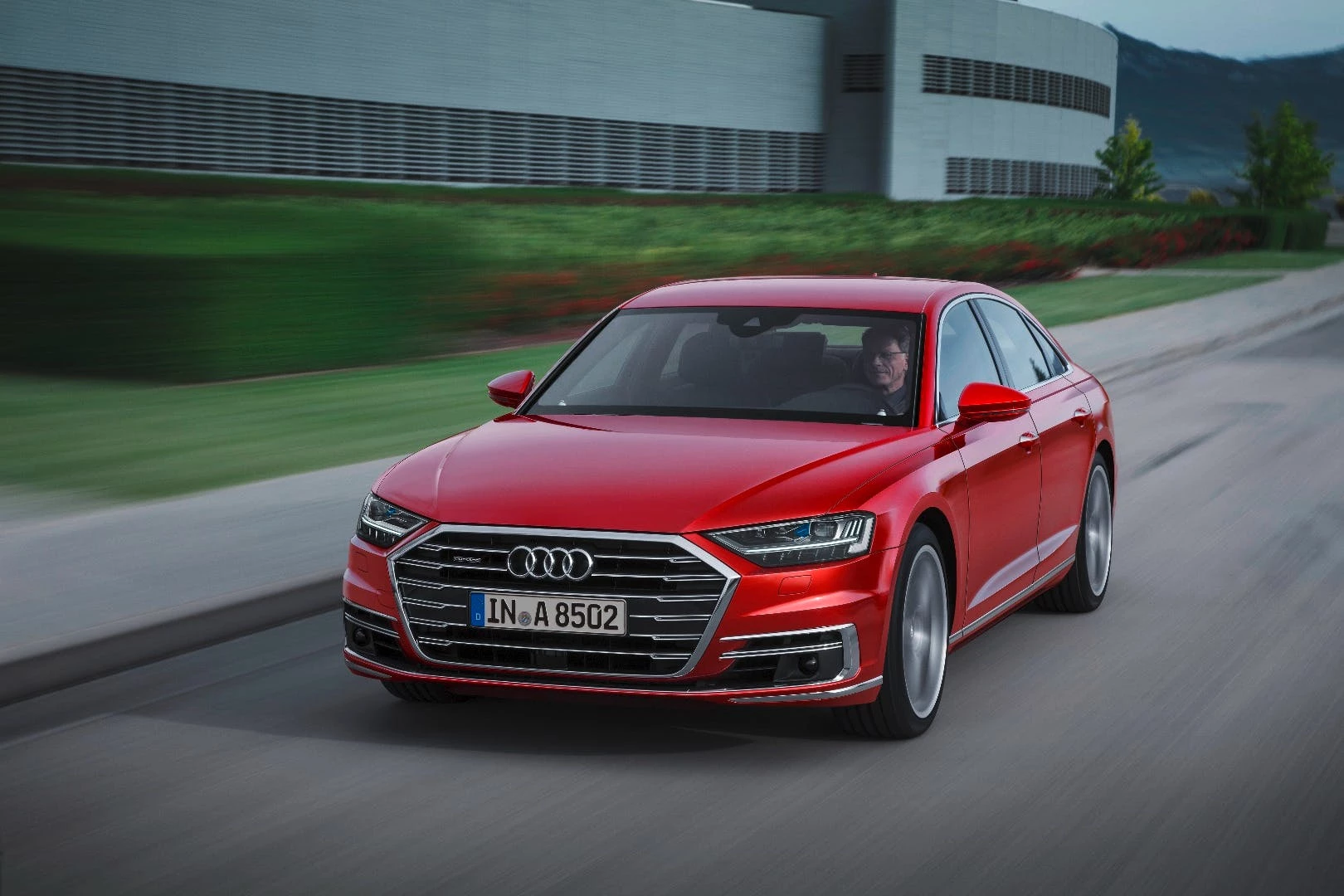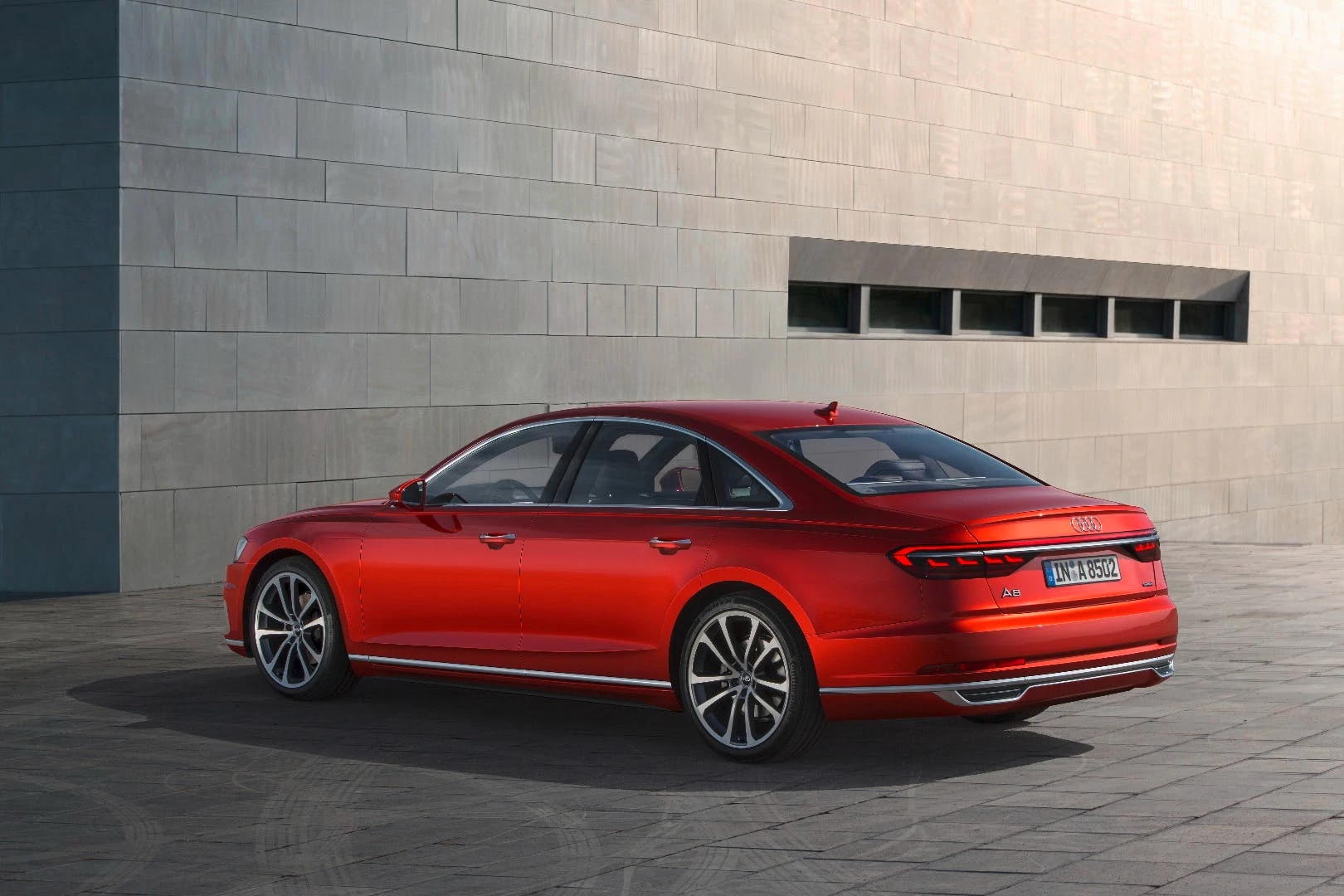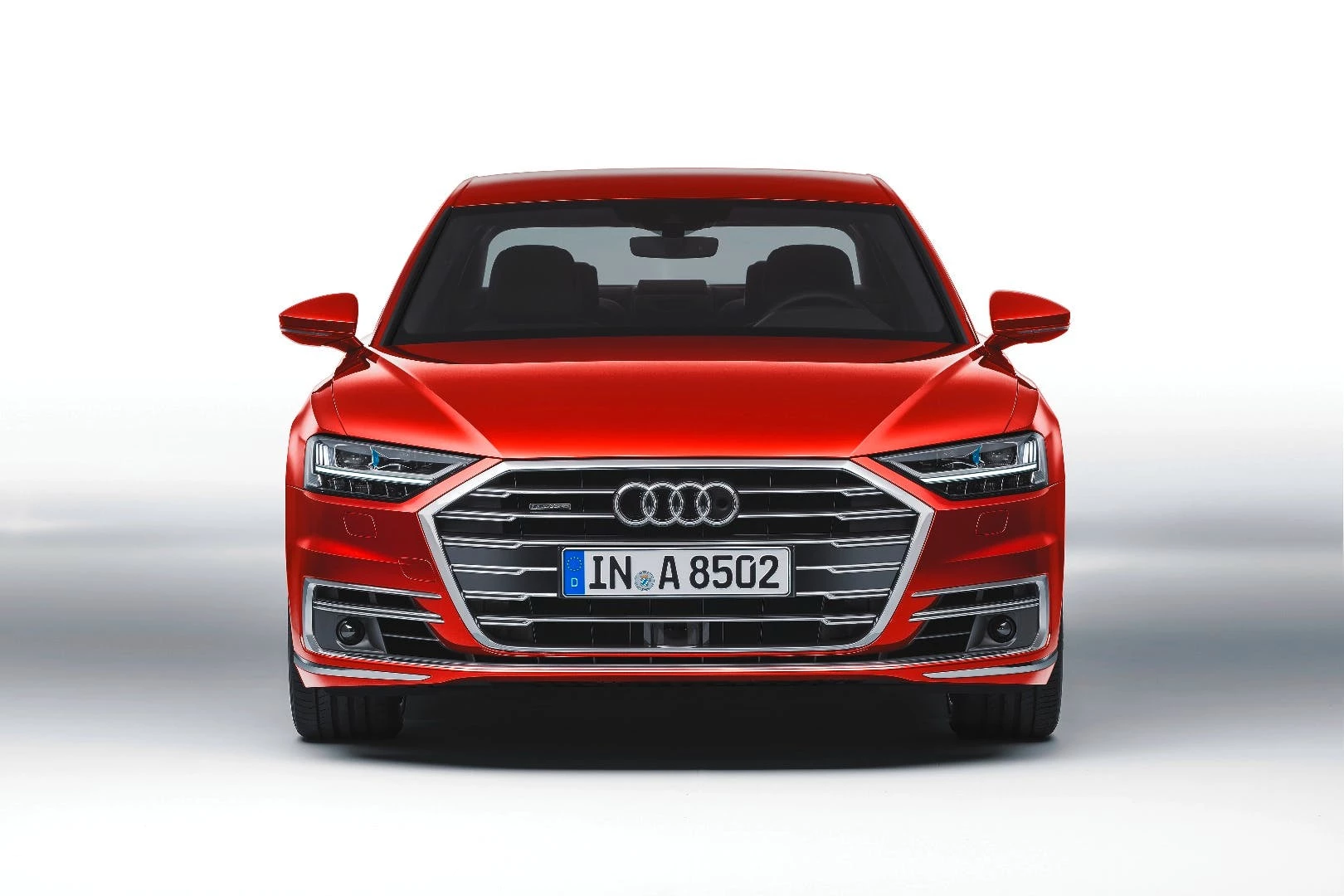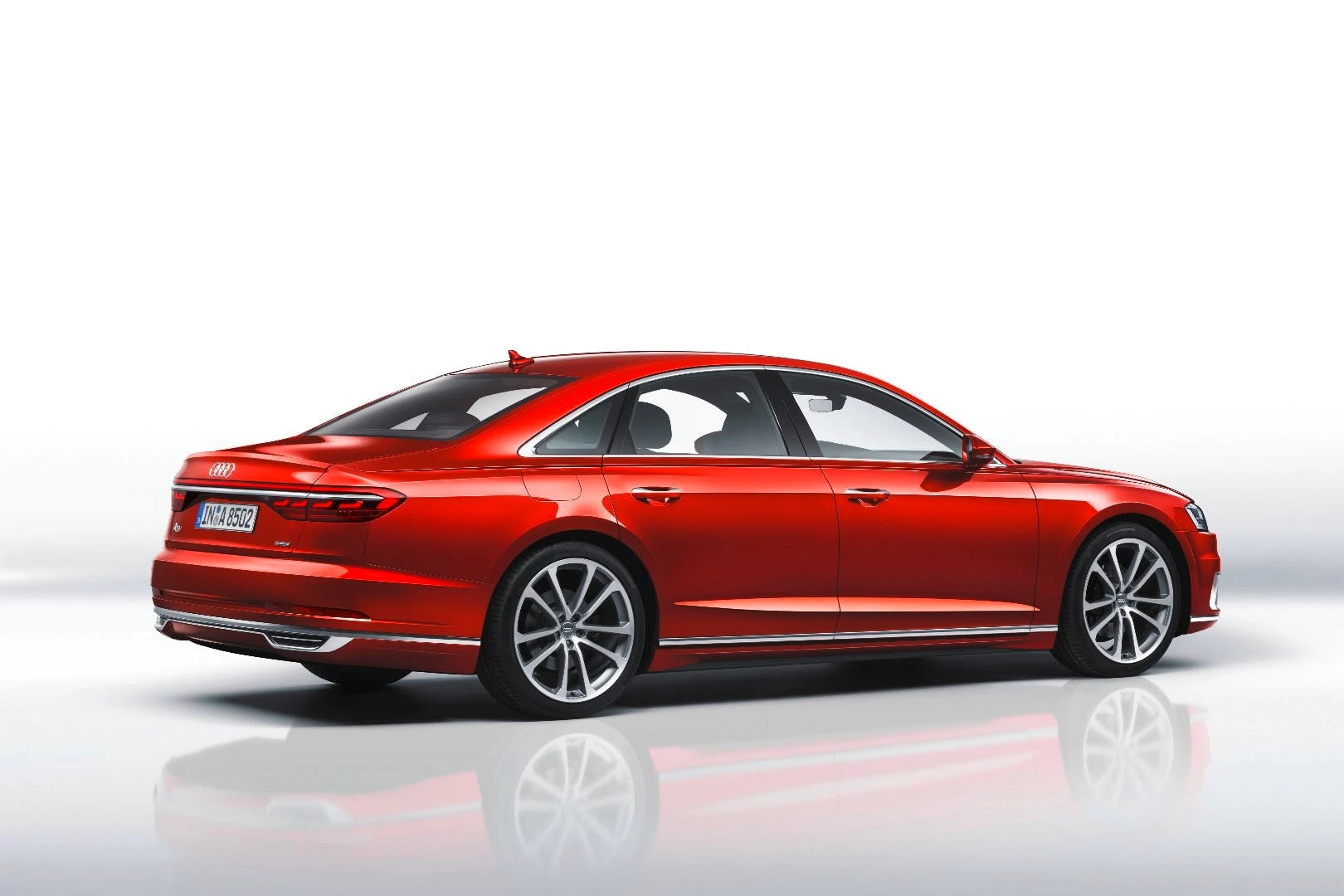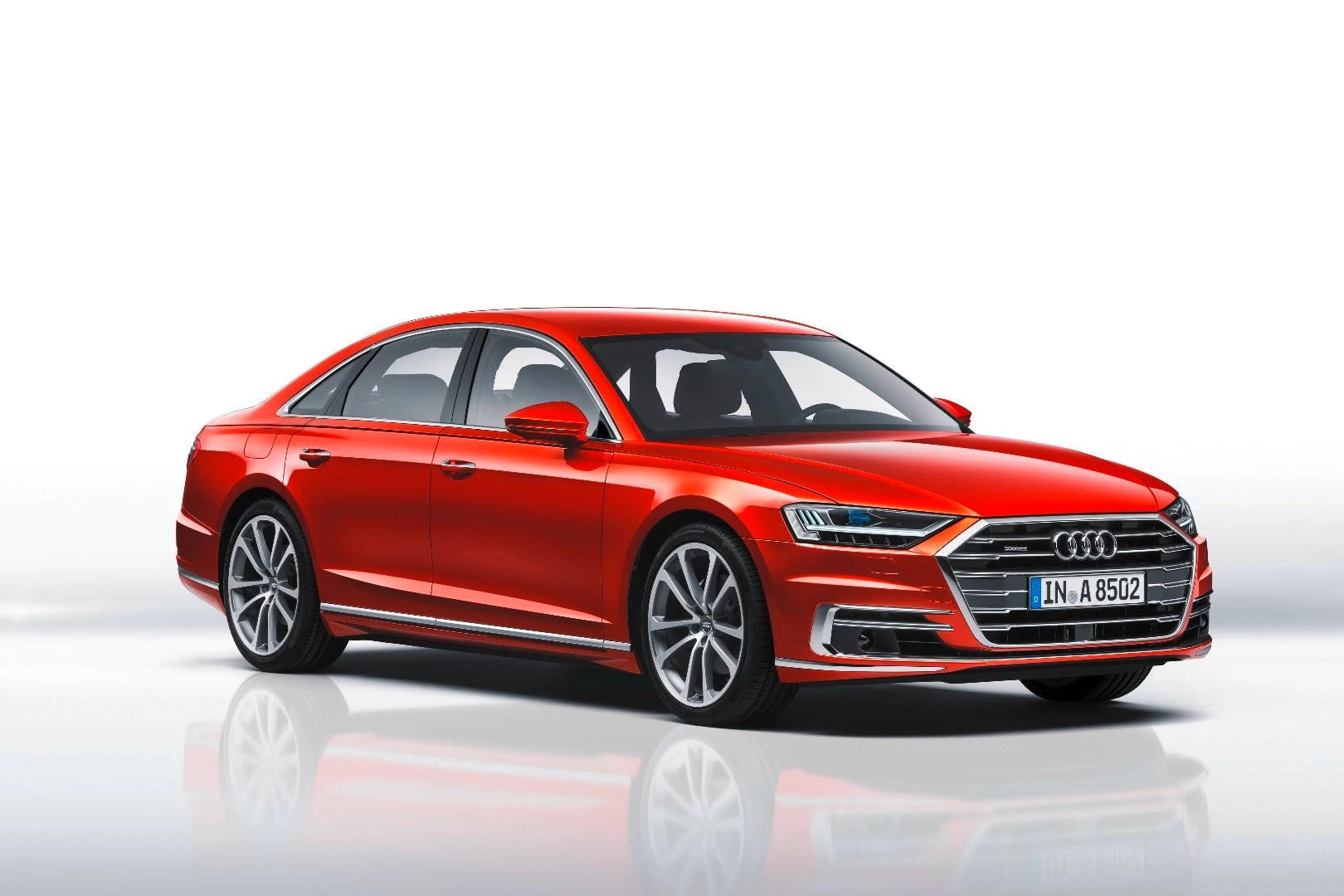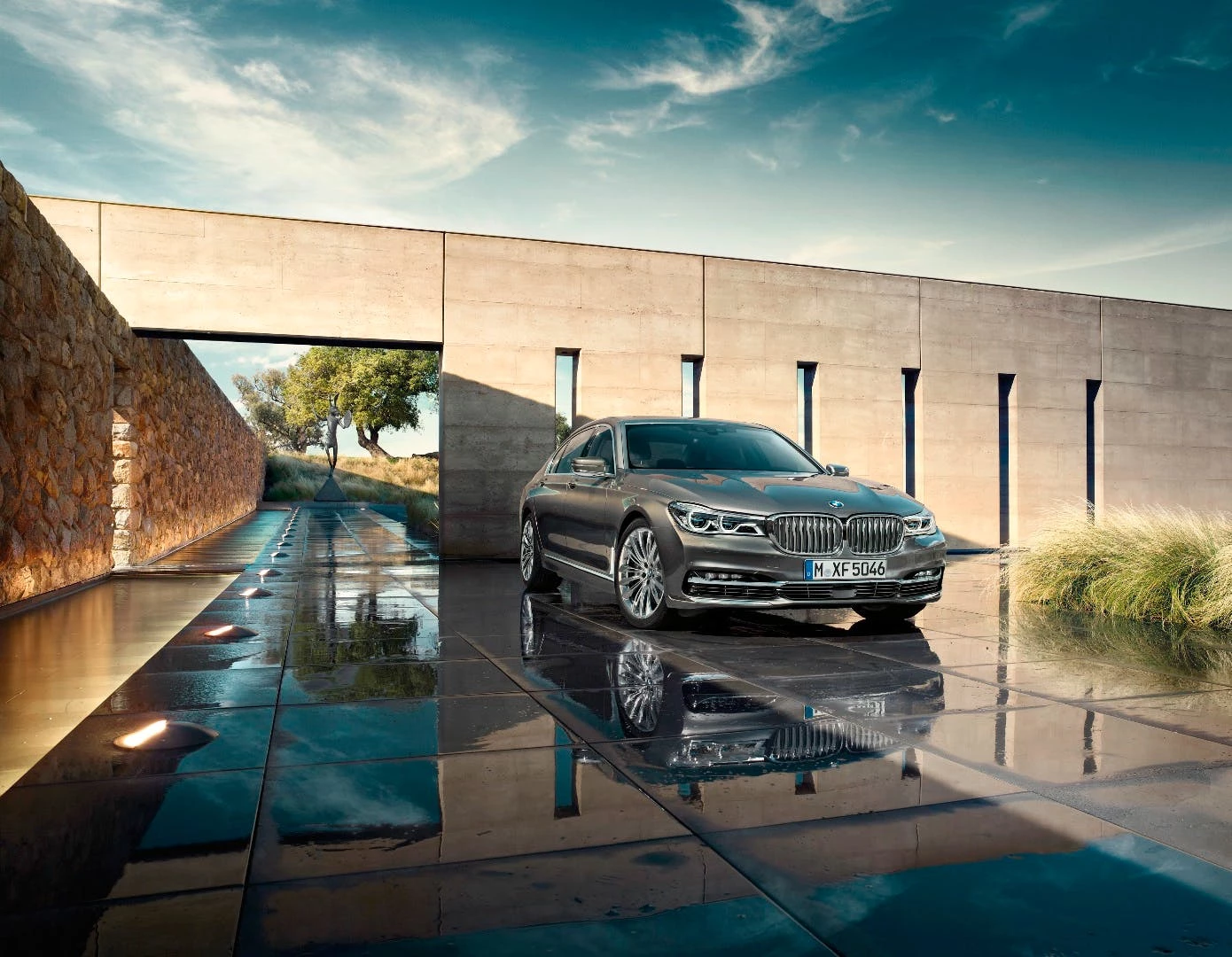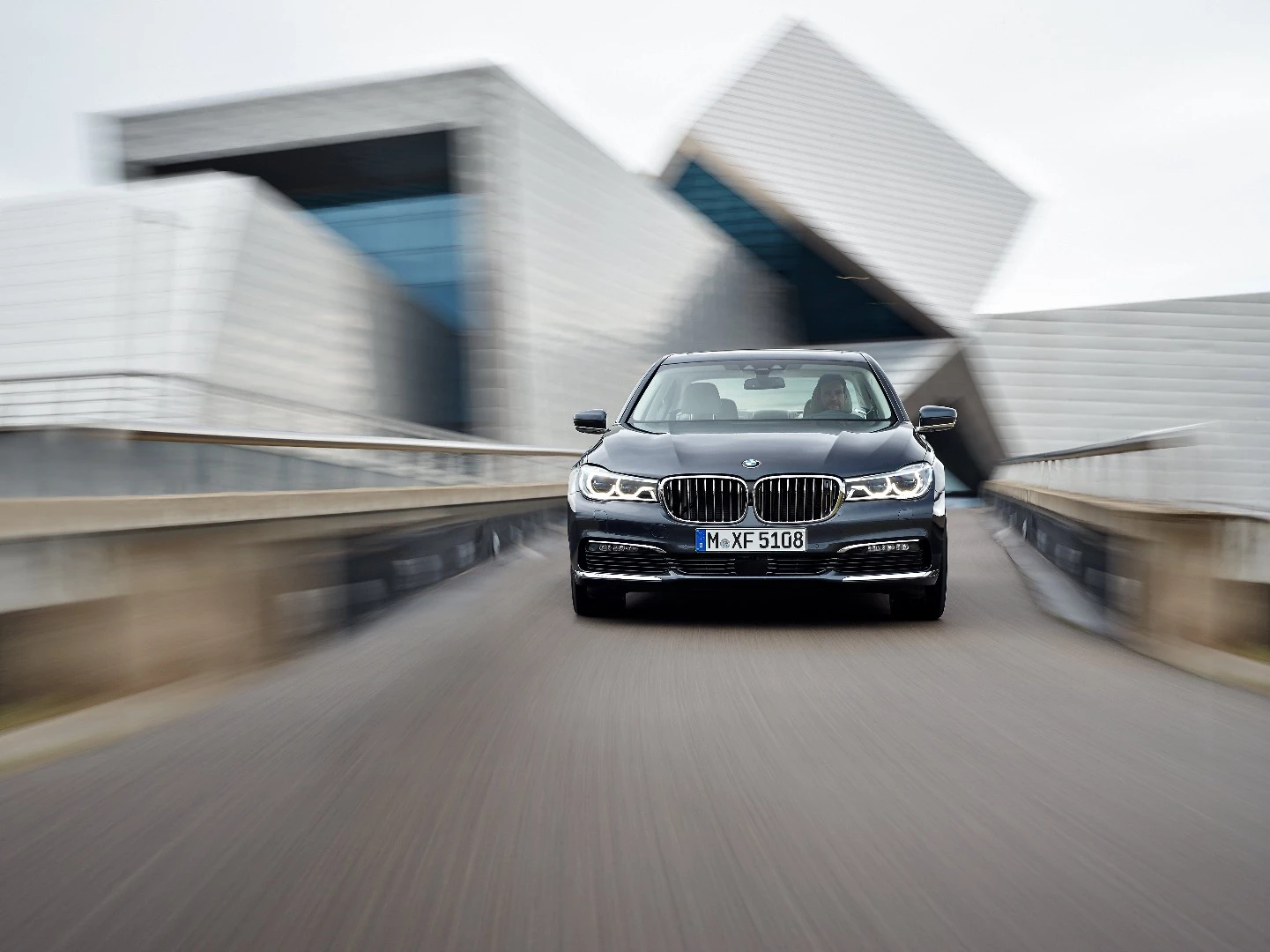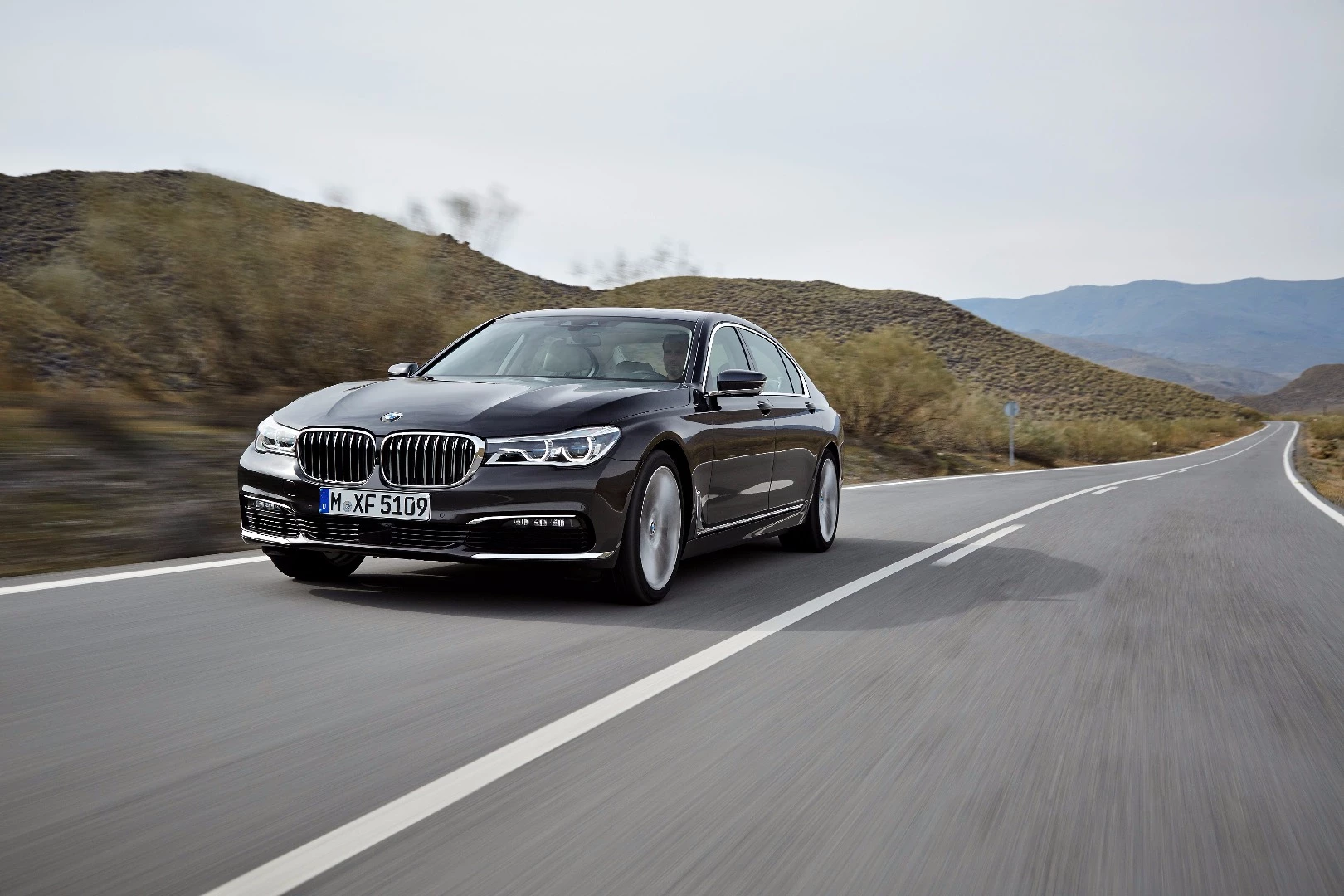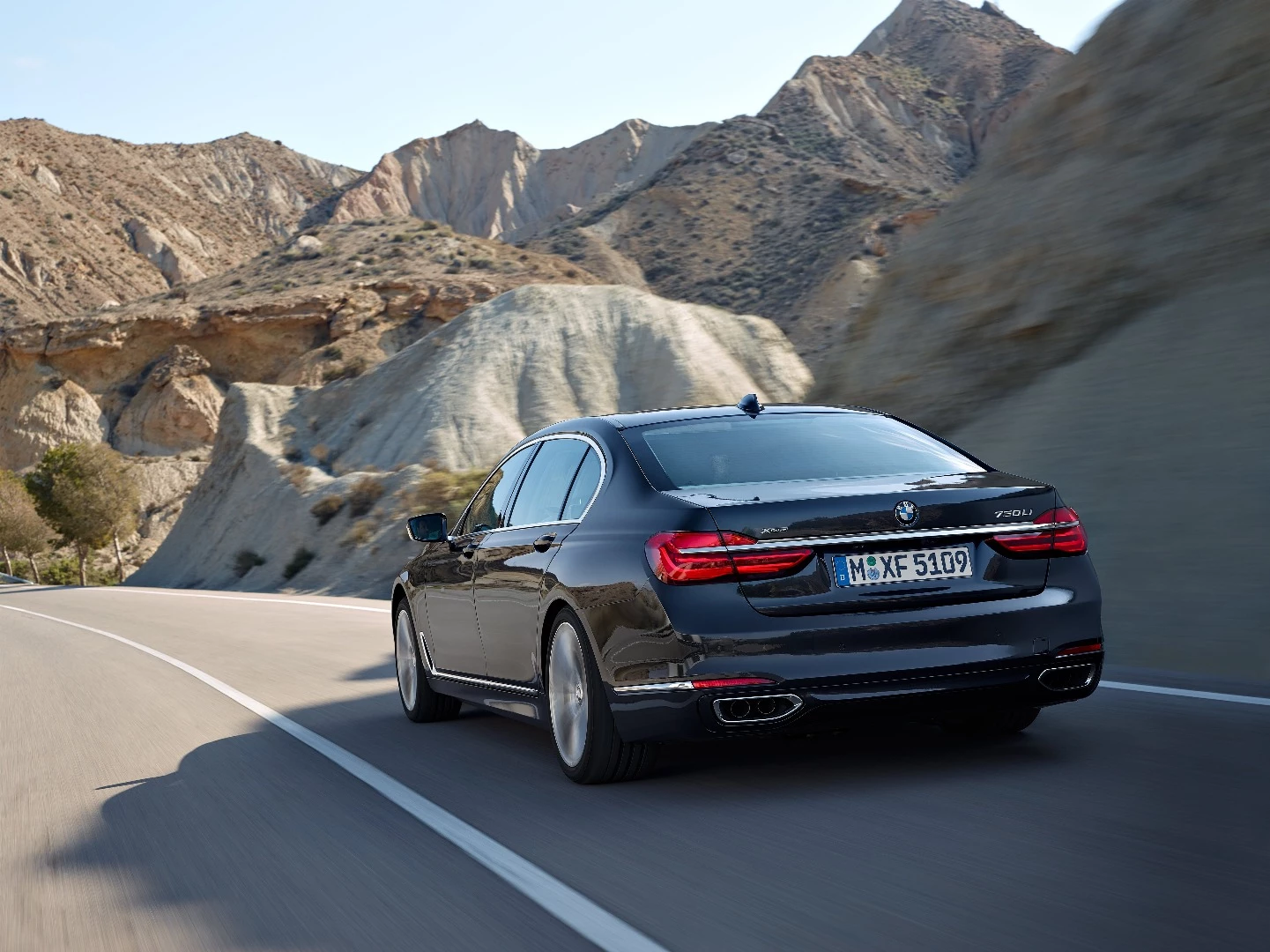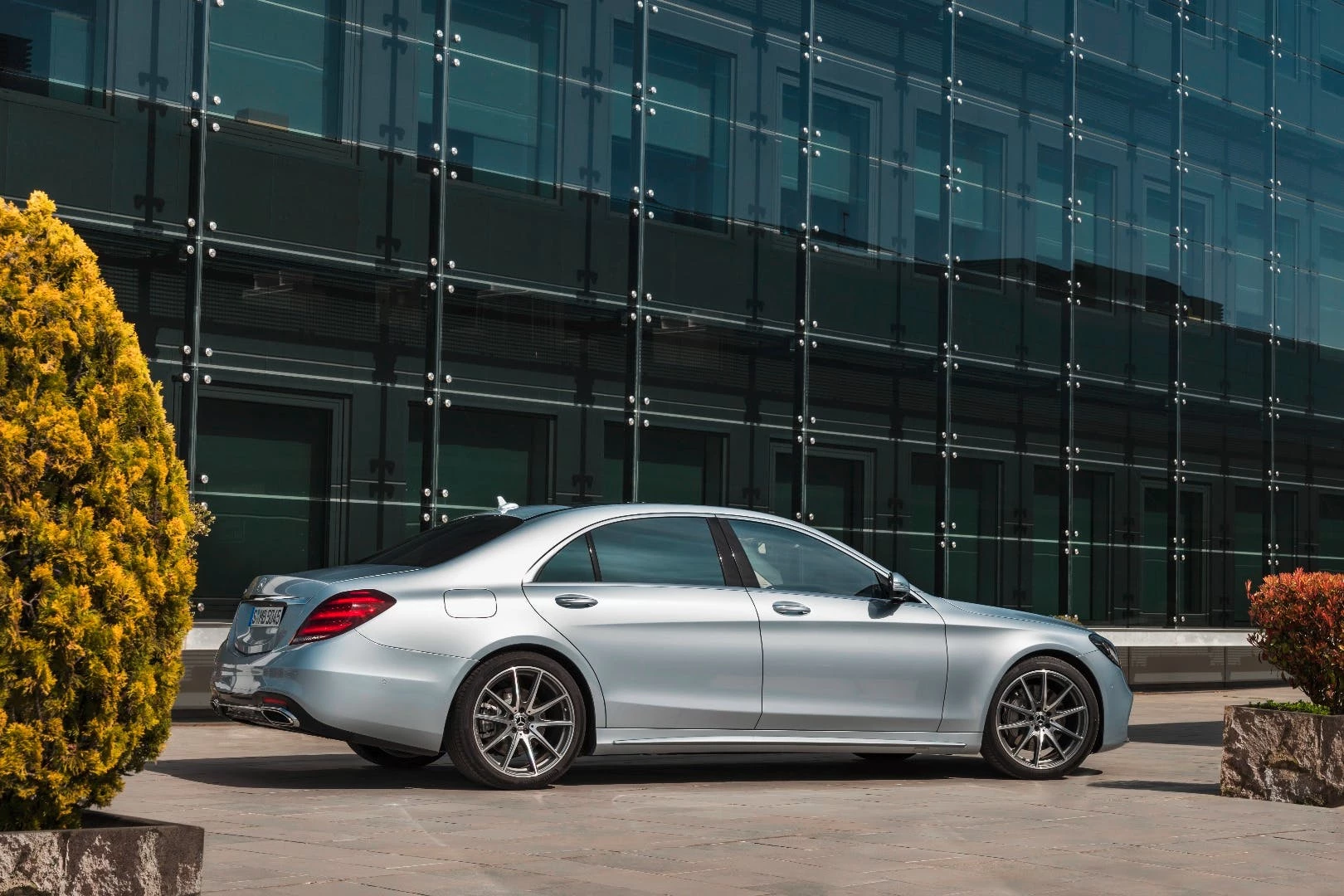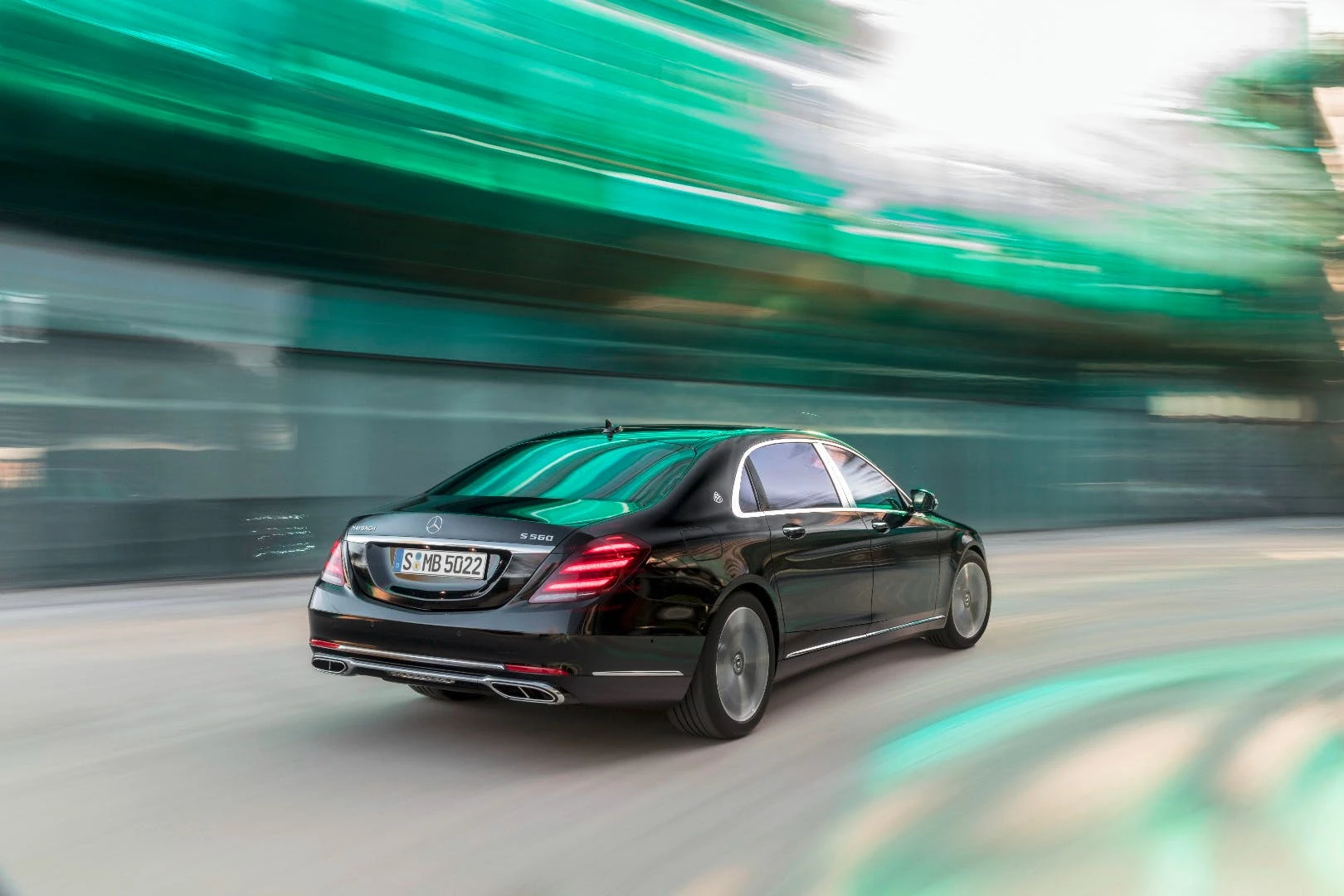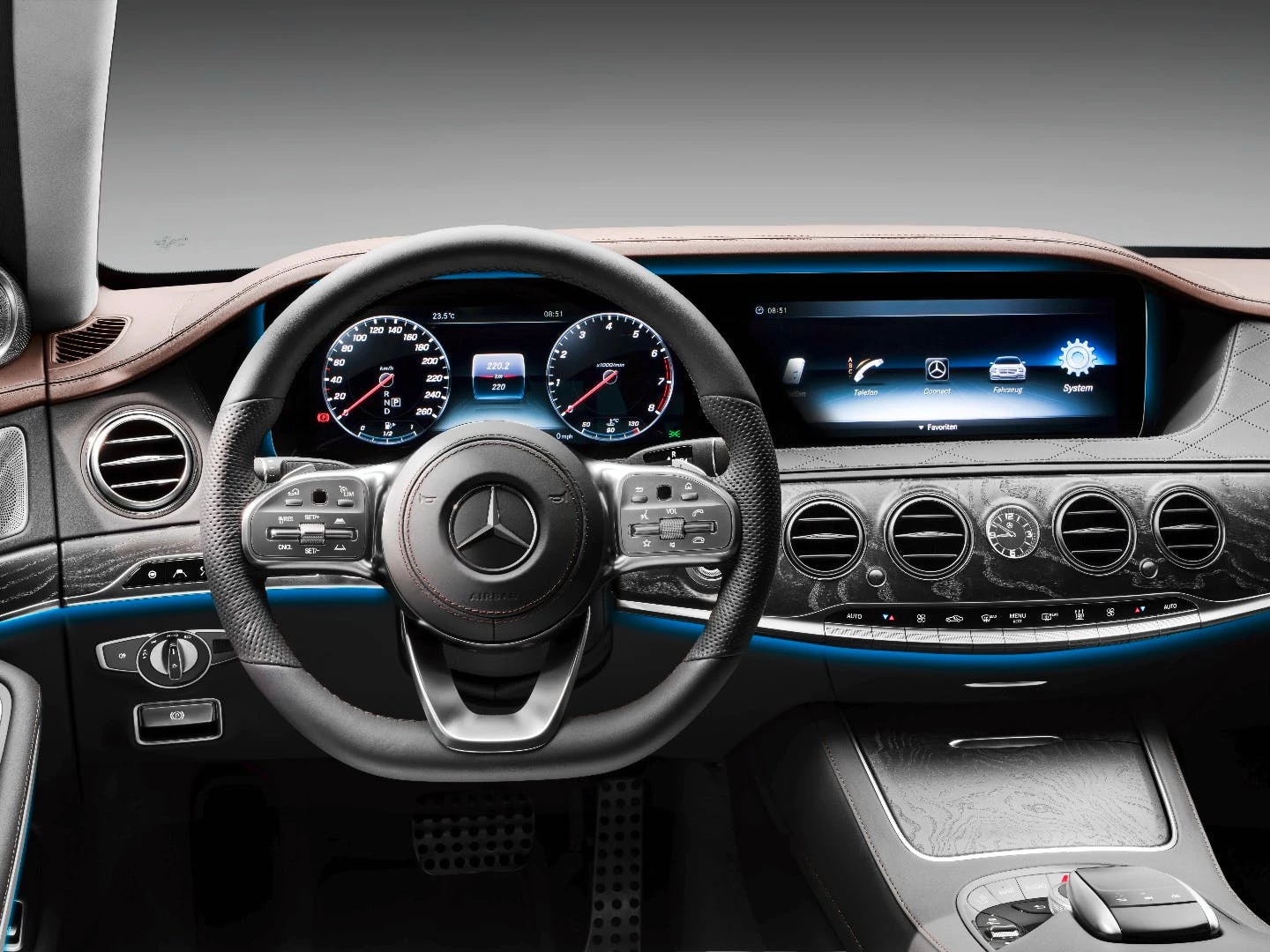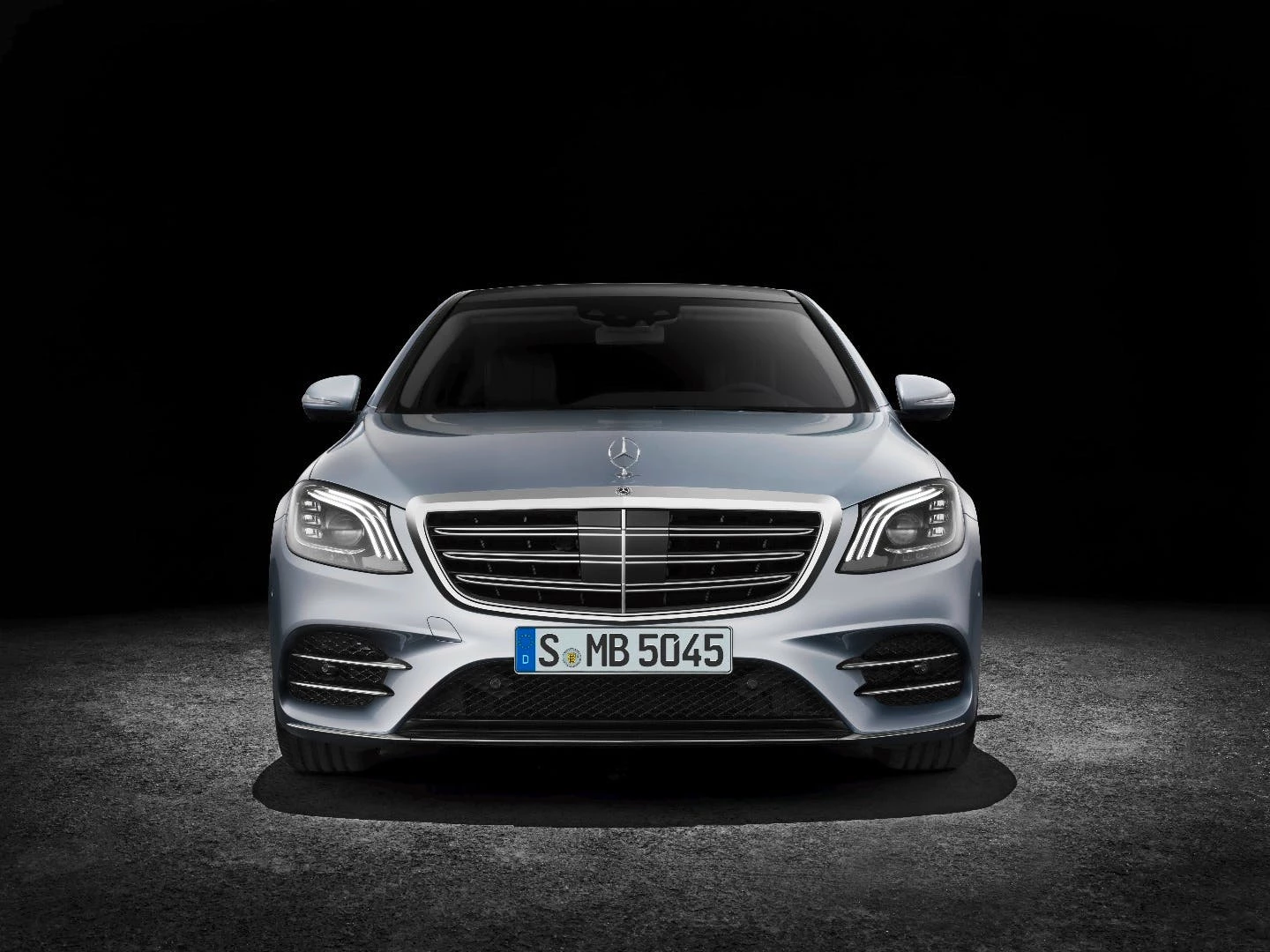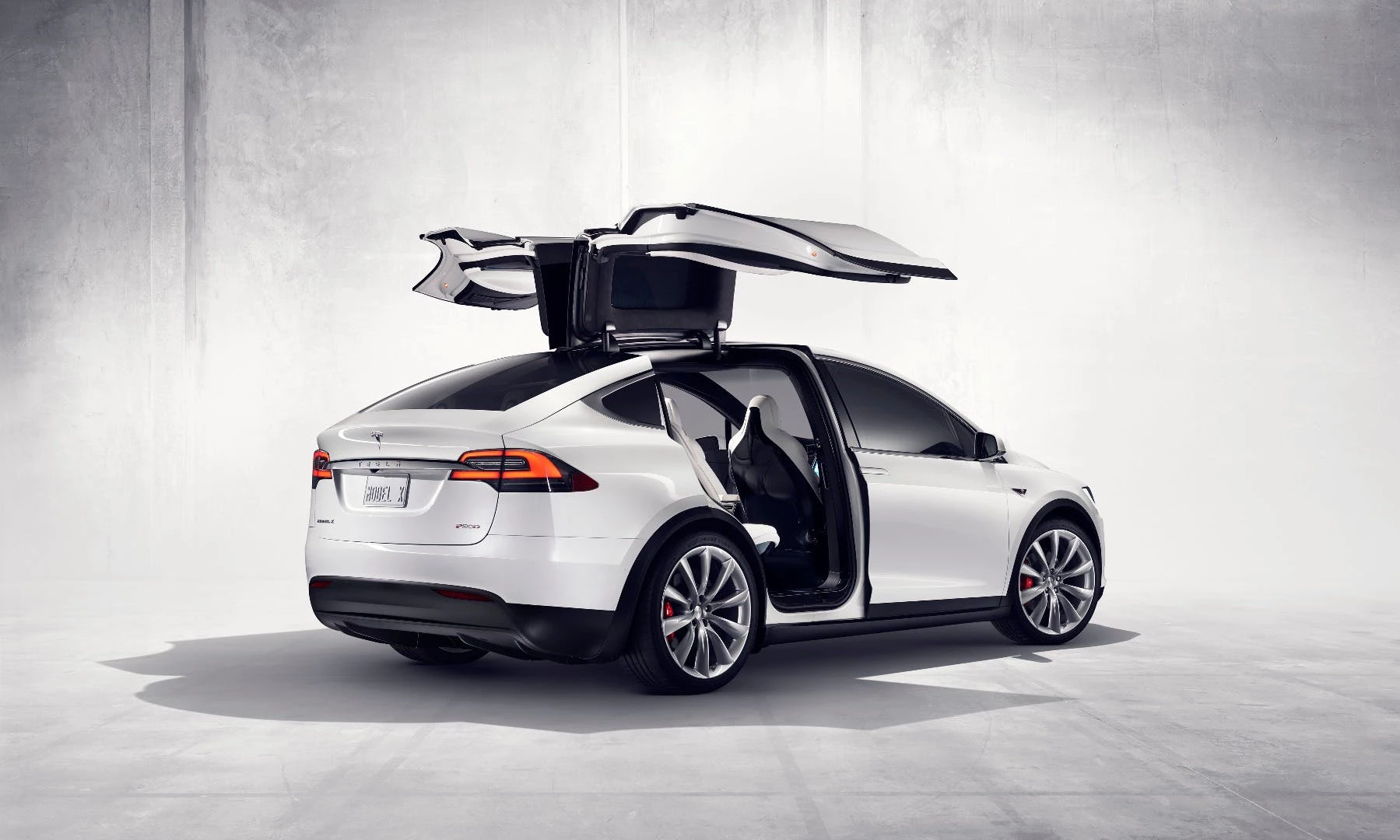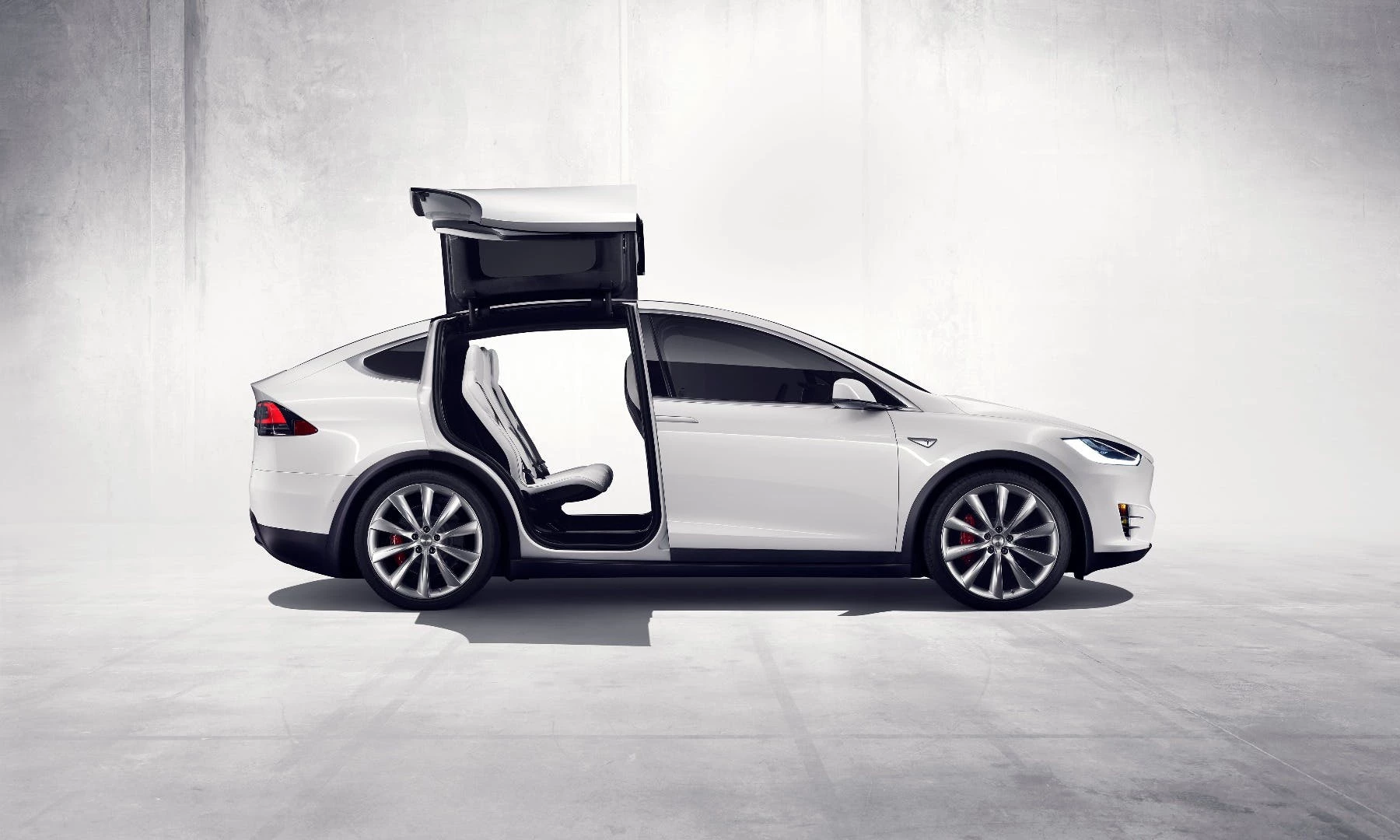Semi-autonomous safety and convenience features have emerged as a new battleground in the world of high-end luxury cars. BMW, Audi and Mercedes have all used their flagships to debut new suites of driver assistance technology aimed at making the commute safer and easier. So, which has the most sophisticated semi-autonomous setup: the Audi A8, BMW 7 Series or Mercedes S-Class? And how do they stack up against the Tesla Model S?
Audi A8

Audi launched the new A8 at a lavish event in Barcelona yesterday, revealing a car that is absolutely loaded with clever tech, from road-reading suspension to a fully digitized cockpit. But the headline feature is the incredibly sophisticated Audi AI semi-autonomous driver assist.
The company is billing Audi AI as the first autonomous driving system to reach Level 3 capability, also known as Conditional Automation. That essentially means when the system is active, drivers (and we use that word advisedly) can flip through a magazine or compose an email, but they still need to be ready to retake control in case the car is flummoxed by particularly tricky road conditions.
At the moment, the Level 3 AI Traffic Jam Pilot operates in stop/start traffic up to 60 km/h (37 mph). It can only be turned on when the car is on freeways with a barrier separating traffic heading in the other direction, and handles the throttle, braking and steering. The problem with all of this? Unless you're in Germany, it probably isn't legal.
Rules vary from state-to-state in America, while Australia has no legislative framework for such a system. It's the same story in China. As a result, the technology simply won't be on offer in those places. What's more, it can't be retrofitted – which means early adopters in some places won't be able to make use of its most impressive feature.
Even without Audi AI fitted, the new A8 has some impressive semi-autonomous capabilities. The adaptive driving assistant will keep the car in its lane, brake and accelerate between 0 and 250 km/h (155 mph). It will also deal with construction sites and will automatically slow for changing speed limits.
Like the 7 Series, the car will remotely pull into/out of tight parking spots while the driver watches on. Unlike the BMW, however, the system works through an app instead of a huge bespoke key. Depending on how you look at it, that could be viewed as a real positive or a huge negative.
BMW 7 Series
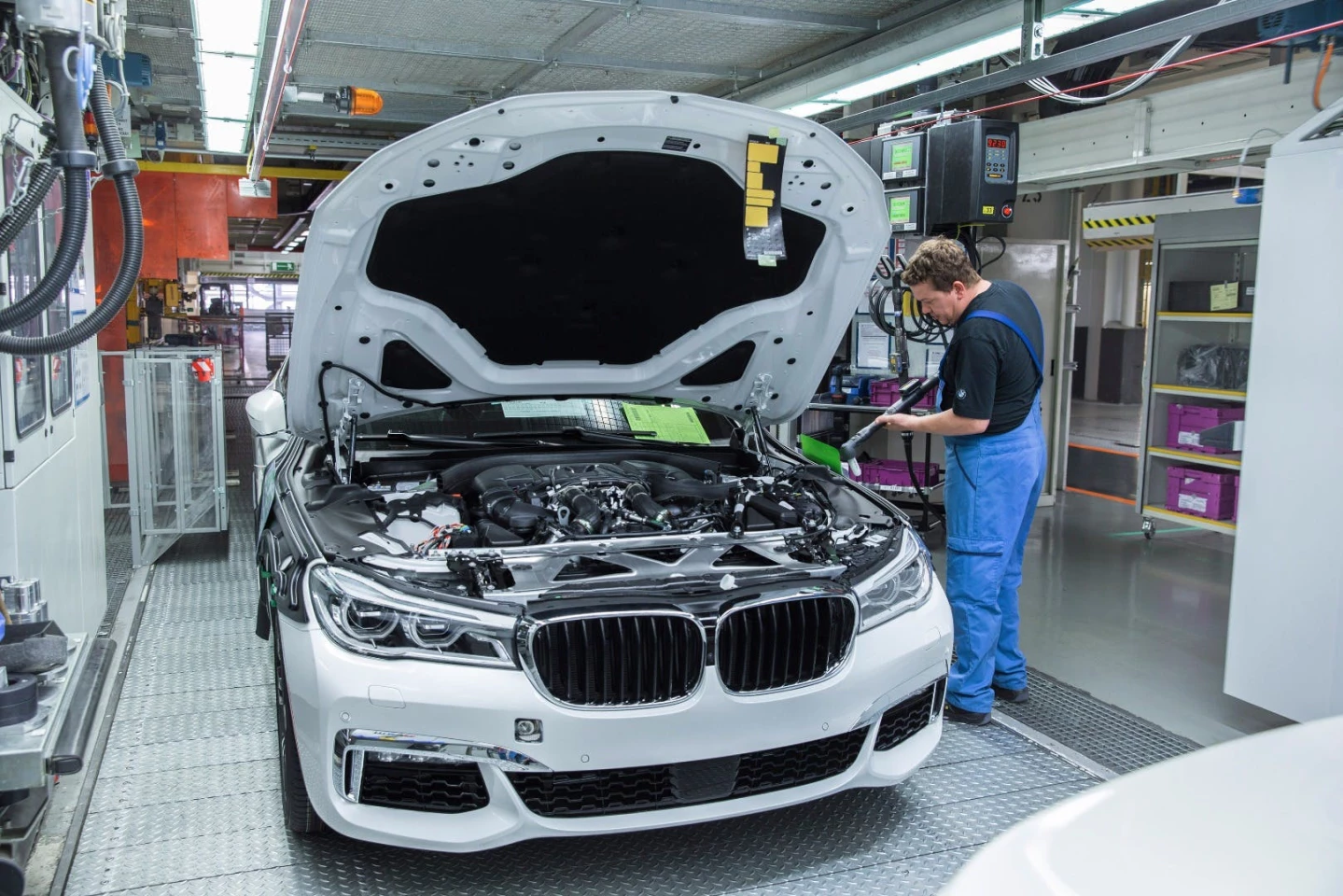
With a carbon-heavy body and some novel interior control solutions, the BMW 7 Series represented a huge step forward for the brand when it launched in 2015. It also showed where BMW wanted to take its semi-autonomous driving systems, which had been sorely lacking in its predecessor.
Although it can't match the Level 3 autonomous capability of the Audi A8, the 7 Series is still incredibly clever in the right conditions. A combination of radar and stereo cameras grant cars fitted with the Driver Assistance Package the ability to maintain their position in their lane and accelerate and brake with the traffic between 0 and 210 km/h (130 mph). Yes, that is 40 km/h (25 mph) slower than the Audi will handle, but the only people likely to notice are autobahn blasters.
It works from standstill, but the adaptive cruise control system in the big Bimmer still needs constant attention. The car needs to be prompted to move off when the traffic starts flowing, and BMW says the driver needs to have their hands on the wheel at all times. Should the driver remove their hands for too long, the system will prompt them to take back the wheel.
In essence, that means you won't be able to flick through a novel or catch up on your work emails, but you will be able to sit back and relax while the car deals with the mechanics of driving. It constitutes Level 2 autonomy, where the driver still needs to keep their eyes on the road.
When it launched the 7 Series, BMW made a big deal of the car's new remote parking functionality. Owners can use the massive touchscreen key to remotely slide the car into tight parking spots, removing the need to risk dinging your door on neighboring vehicles. Rivals have since copied the function, but the 7 Series is to only car capable of doing it from the key.
Mercedes S-Class

It was treated to a mid-life refresh earlier this year, but the basic S-Class chassis is the oldest here. Even so, the S-Class has always been a technology leader for Mercedes-Benz, and the latest version maintains that reputation with a suite of semi-autonomous systems to match or beat those available on the BMW.
Adaptive cruise control and self-steering work at speeds up to 210 km/h (130 mph) in the S-Class, just like the 7 Series and (perhaps more importantly) its younger E-Class brother. The system will automatically start slowing down for junctions, roundabouts, toll booths and, if the driver is using the satellite navigation system, the correct motorway exit. Interestingly, the car will even move off with traffic if it has been stopped for less than 30 seconds, which is a step toward the capability of the Audi AI system.
When the car is steering itself, the driver can trigger a lane change by flicking the indicators at speeds between 80 and 180 km/h (50 to 112 mph). Tesla was the first company to integrate this capability into its cars, but the system on the S-Class works across a broader speed range.
When the S-Class detects a hill, it automatically backs off the throttle to try and deliver better fuel consumption, too. That might not make much of a different if you're the sort of person who can afford to buy one of these cars for yourself, but it's likely to add up in the world of chauffeur-driven luxury.
The Mercedes will park itself in end-on and parallel spots remotely, and drivers can slip the car into something called Explore Mode, which allows the car to be treated like a giant remote control toy for 15 seconds, provided the car is only moving straight. There's no real point to this capability, apart from being pretty cool.
Tesla Model S/X
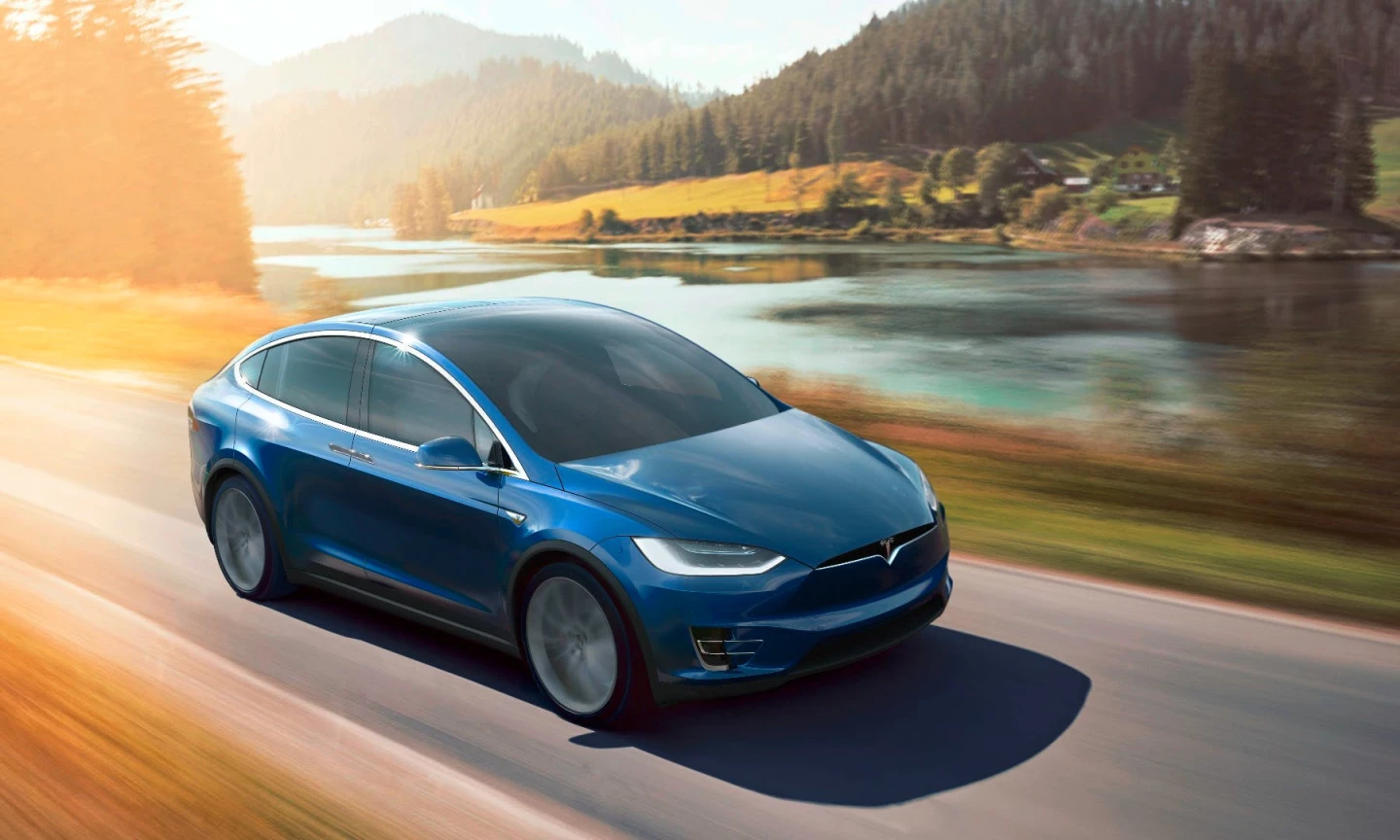
Emboldened by its status as industry-shaking upstart, Tesla has made a lot of noise about the capability of its Autopilot system. Although the Autopilot name suggests it turns the car into a fully autonomous vehicle, it lags behind the Germans in some areas of capability, and has the ugly stain of a dead driver hanging over its head – even though it has been revealed said driver ignored repeated warnings from his car.
All Teslas are now sold with the hardware for Enhanced Autopilot, the second iteration of the brand's semi-autonomous cruise control system. A recent update has removed the 88 km/h (55 mph) speed limiter on the system, and Elon Musk says the auto-steer has become silky smooth.
But, despite what gushing owners might say in their unbearable YouTube blogs, it doesn't turn the Model S/X into a self-driving car. Owners need to have their hands on the wheel at all times, just like they do in the BMW 7 Series and Mercedes S-Class, and the car flashes a warning when it needs the driver to take control again. That means flicking through a book or emailing is totally out of the question.
Although it can't match the Germans at the moment, Tesla does take a very unique approach to updating its cars. Enhanced Autopilot can be updated over-the-air, which means owners might go to bed with one set of capabilities and wake up with a car that's able to self-drive faster, or more smoothly than before.
